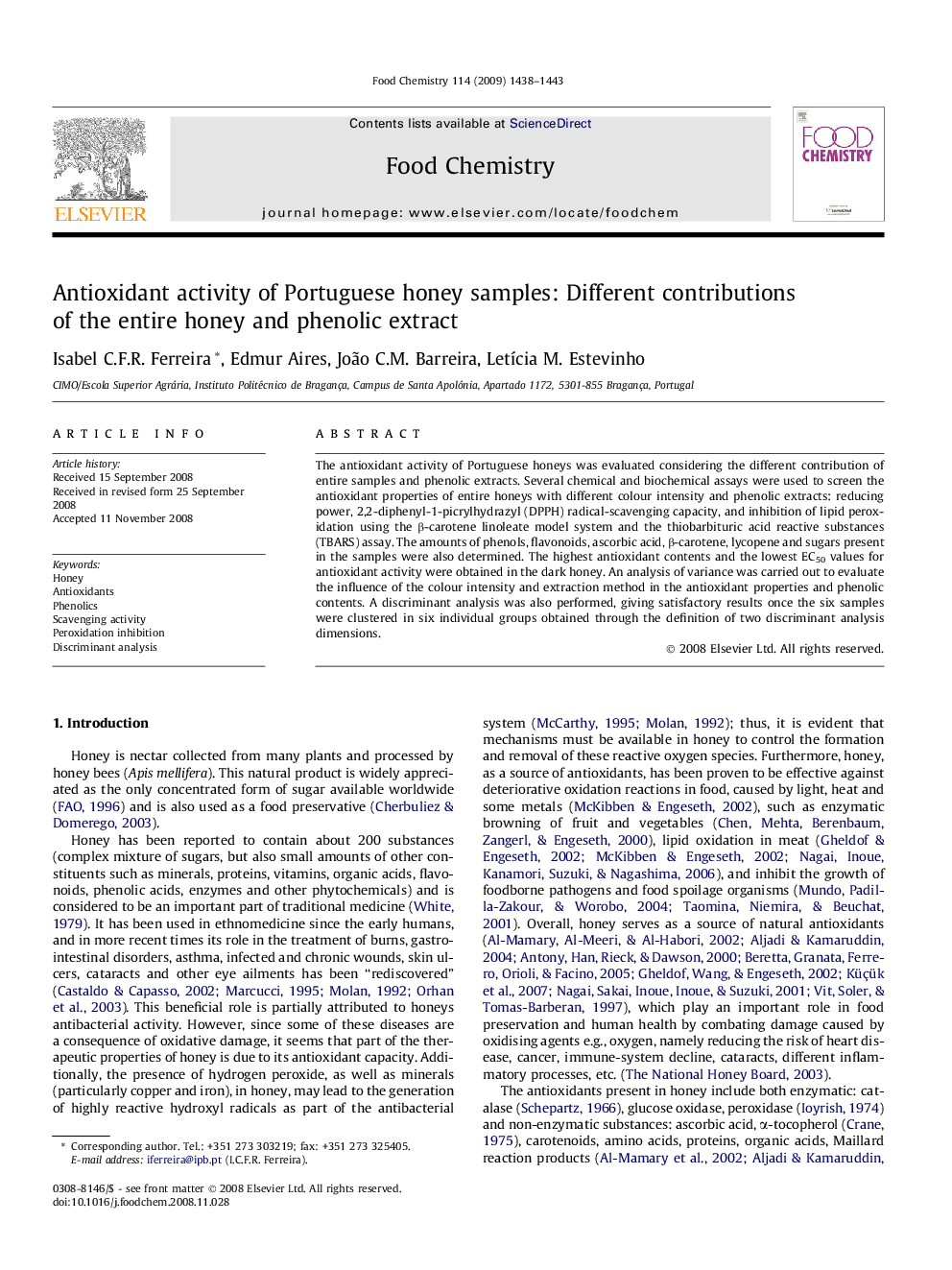| Article ID | Journal | Published Year | Pages | File Type |
|---|---|---|---|---|
| 1186252 | Food Chemistry | 2009 | 6 Pages |
The antioxidant activity of Portuguese honeys was evaluated considering the different contribution of entire samples and phenolic extracts. Several chemical and biochemical assays were used to screen the antioxidant properties of entire honeys with different colour intensity and phenolic extracts: reducing power, 2,2-diphenyl-1-picrylhydrazyl (DPPH) radical-scavenging capacity, and inhibition of lipid peroxidation using the β-carotene linoleate model system and the thiobarbituric acid reactive substances (TBARS) assay. The amounts of phenols, flavonoids, ascorbic acid, β-carotene, lycopene and sugars present in the samples were also determined. The highest antioxidant contents and the lowest EC50 values for antioxidant activity were obtained in the dark honey. An analysis of variance was carried out to evaluate the influence of the colour intensity and extraction method in the antioxidant properties and phenolic contents. A discriminant analysis was also performed, giving satisfactory results once the six samples were clustered in six individual groups obtained through the definition of two discriminant analysis dimensions.
